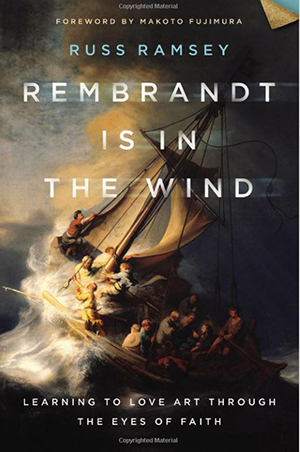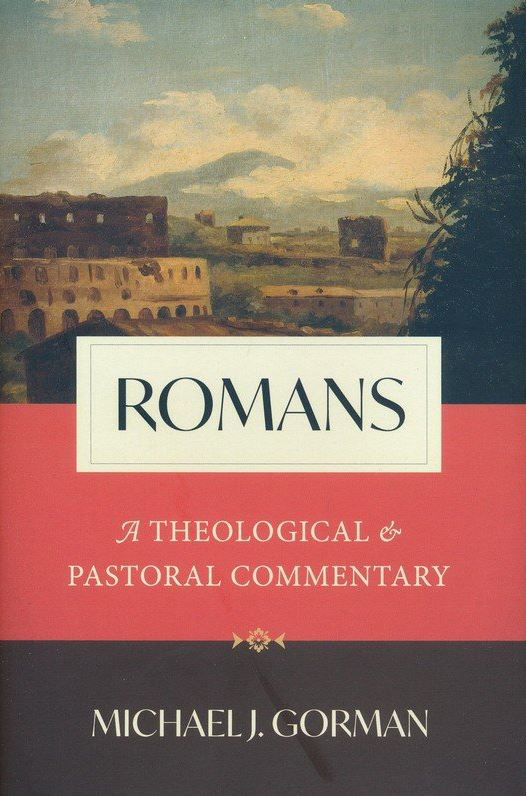THE CATHOLIC REVIEW: The Natural and Spiritual Beauty of Spring
by Deacon Rick Bauer
Did you know that Van Gogh sold only one work of art during his lifetime, yet in the last three months of his life, he painted, on average, one a day? Or that Caravaggio actually committed murder while he was completing some of the most glorious biblical scenes in history? There is evidential power of divinity in everything that has beauty. A new book by Russ Ramsey, a Presbyterian pastor and art lover, brings us closer to those artists who were touched by their faith to create masterpieces.
 “Rembrandt Is in the Wind” is an invitation to discover some of the world’s most celebrated artists and works, through which we can witness the gospel of Christ in a way that speaks to the longings common to the human experience. The book is part art history, part biblical study, part philosophy, and part psychology — but it’s all wonderful story-telling. The lives of the artists in this book illustrate the struggle of living in this world and point to the beauty of redemption in Christ.
“Rembrandt Is in the Wind” is an invitation to discover some of the world’s most celebrated artists and works, through which we can witness the gospel of Christ in a way that speaks to the longings common to the human experience. The book is part art history, part biblical study, part philosophy, and part psychology — but it’s all wonderful story-telling. The lives of the artists in this book illustrate the struggle of living in this world and point to the beauty of redemption in Christ.
Each story is different. Some conclude with resounding triumph, while others end in struggle. But all of them raise important questions about humanity’s hunger and capacity for glory, and they all teach us to see and love beauty.
From an introductory chapter showing why Eden’s beauty still resonates in our consciousness, to studies of Michelangelo’s David, Caravaggio (a painter whose life of beauty was marred by poor life choices), Rembrandt, Johannes Vermeer, Vincent van Gogh, American painter Edward Hopper (with thoughtful reflections on our longing for authentic human connections), and others, Rembrandt is in the Wind is an absolute joy to behold and contemplate.
Some of us recognize we are in the presence of such wonder but seldom have words to articulate our reaction. Ramsey provides three helpful appendices entitled “How to Visit an Art Museum”, “How to Look at a Work of Art”, and “Overview of Western Art: Renaissance to Modern”, that provide good reminders if we majored in engineering while at university.
The author has taken great trouble to create an accompanying 10-lesson DVD. Additionally, groups can request an entire set of bonus materials including a discussion guide, even a small easel with these works of art illustrated, a wonderful help in sharing these thoughtful images (and the lives of their creators) with others. What a beautiful way to share the gospel messages with friends, neighbors, and other faithful Christians.
“By their fruits you shall know them,” spoke Jesus about influence and disciple-making. Such it has been to know several graduates from Wyoming Catholic College, a treasured Catholic community. It is no surprise to discover the good fruit of Catholic humanities scholarship in the latest offering by noted Dante scholar and WCC professor Jason Baxter. His new book, “The Medieval Mind of C.S. Lewis,” probes the sources of Lewis’ writing, thinking, and theology — the medieval world. This world has a rich collection of spirituallythemed writings that helped form C.S. Lewis’ philosophical and theological imagination, as well as the imagination of others who were part of the writing/ teaching fellowship known in early 20th-century England as “the Inklings.” (In addition to Lewis and his brother Warren, the Inklings included J.R.R. Tolkien and his son Christopher, Charles Williams, Adam Fox, and Owen Barfield).
Many readers know Lewis as an author of fiction and fantasy literature, including the “Chronicles of Narnia.” Others know him for his books in apologetics, including “Mere Christianity” and “The Problem of Pain.” But few know him for his scholarly work as a professor of medieval and Renaissance literature.
What shaped the mind of this great thinker, a self-confessed “dinosaur”? Baxter argues that Lewis was formed as an undeniably modern Christian, but it was ironic that authors like Dante and Boethius provided Lewis a worldview that was undeniably relevant to the challenges of our contemporary world.
Baxter’s chapters (the Inklings loved their wordplay, I’m afraid) are devoted to “The Lost Cathedral: The Medieval Cosmos,” “Why Lewis Loved Dante,” “How to Pray to a Medieval God,” and many others, concluding with “Nostalgia for the Future.” Without this “discipleship” from the spiritual and literary legacy of the Middle Ages, refined by the friendships and collegiality of a group of scholars, writers, and men of faith, C.S. Lewis would not have matured into the great essayist, apologist, writer, and human being that he became. Baxter’s work is somewhat off the beaten path but is a rich reward for those who seek a world less travelled.
 Every Catholic generation, it seems, has a season when it rediscovers St. Paul, and we appear to be doing so again. If there was any negative aspect of the lectionary format for our Mass readings (not saying there is, mind you!) it would be the comparative neglect of Paul’s letters for our concentration on the gospels. Preachers would need to graze widely and feed their flock with more than “the Four,” teach classes on the Pauline canon often, and we might be much more skilled to teach our Protestant brothers and sisters — and the world — about what Paul really meant in these writings.
Every Catholic generation, it seems, has a season when it rediscovers St. Paul, and we appear to be doing so again. If there was any negative aspect of the lectionary format for our Mass readings (not saying there is, mind you!) it would be the comparative neglect of Paul’s letters for our concentration on the gospels. Preachers would need to graze widely and feed their flock with more than “the Four,” teach classes on the Pauline canon often, and we might be much more skilled to teach our Protestant brothers and sisters — and the world — about what Paul really meant in these writings.
Thus, it is an often-overlooked blessing that our young men currently training for ministry at Mount St. Mary’s Seminary in Maryland have a professor in Pauline studies and New Testament Greek like Michael Gorman.
I’ve had the pleasure to know Dr. Gorman for almost a decade, first from his writings and later from personal exchanges and scholarly meetings. Our diocese uses Gorman’s noted textbook “The Apostle of the Crucified Lord” when our deacon candidates study St. Paul’s writings, and for good reason.
“Michael Gorman is that rare scholar of eminent distinction who is willing to read the Pauline letters as Christian scripture,” says Dr. Scott Hahn. “His approach is ecumenically sensitive, appealing to what Protestants and Catholics hold in common. And his analysis reprises the great themes for which he is justly famous: participation, cruciformity, transformation, and mission. Widely accessible, this commentary will be useful (on the one hand) to scholars, teachers, and preachers, and (on the other) to interested lay readers.”
In line with Paul’s focus on Christian living, Gorman interprets Romans at a consistently practical level, highlighting the letter’s significance for Christian theology, daily life, and pastoral ministry.
Gorman goes beyond the “how to get saved” manual for which Romans has been mistaken and addresses how it has been read and misread by every succeeding generation. He provides thoughtful questions for reflection and sidebars on important concepts, making this commentary especially useful for those preparing to preach or teach from Romans — the “epistle of life,” as Gorman calls it, for its extraordinary promise that, through faith, we might walk in newness of life with Christ.
This book is a must-have for any serious Christian seeking to understand Paul, for those preaching and teaching Romans, or for lay classes learning together the words and meaning of the contribution of Paul to our Christian faith.
—Deacon Rick Bauer
761